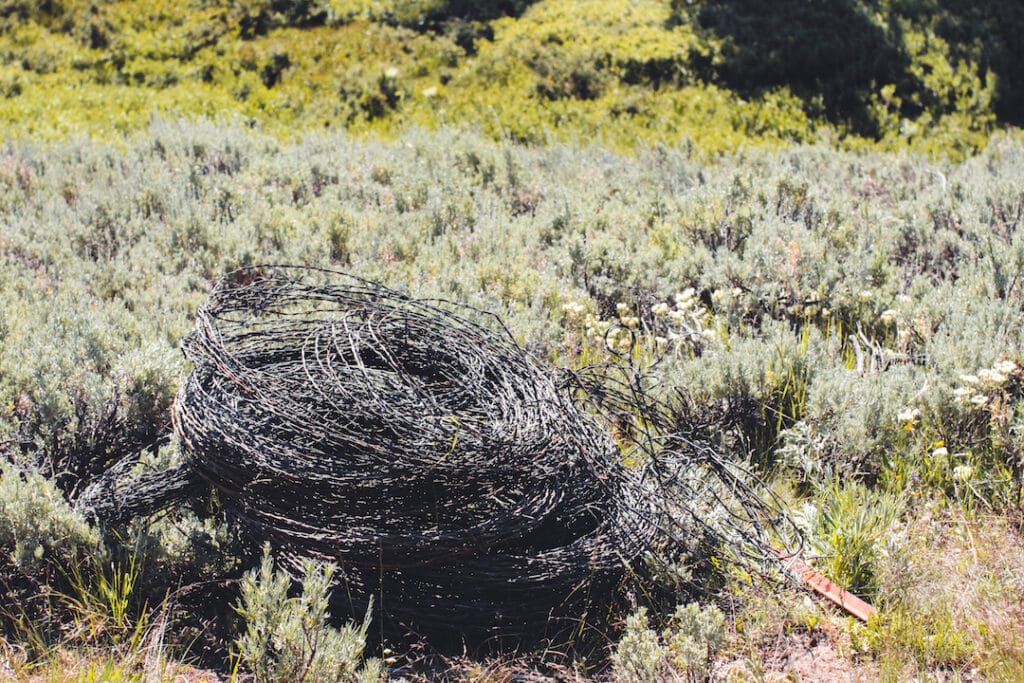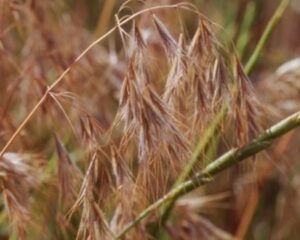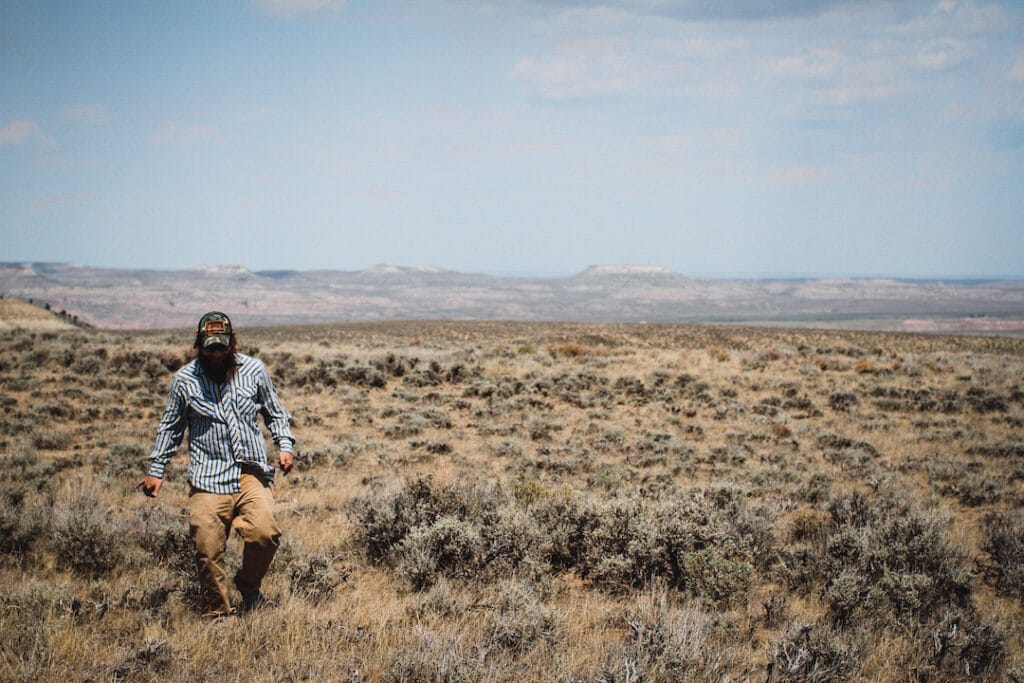If you have the luck to own a little piece of Wyoming’s vast rangelands, you might be wondering how to support local wildlife on your property, particularly the antler bearing type. When managing for mule deer, it is good to first check-in with Wyoming Game and Fish Department habitat maps or your local biologist to determine what kind of habitat you have. Mule deer may use a patch of territory year-round or only during certain critical periods of their life cycle, such as fawning, migration, or seasonal grazing/browsing.
Once you know the lay of the land and its importance to mule deer, you may want to take a tour of your property to see what shape it is in. If you are unfamiliar with range management, bringing an expert on-site can be a big help here. Look for abundant native grasses and leafy plants and preferred browse plants such as sagebrush, bitterbrush, cliffrose, and rabbitbrush. The terrain and overall habitat type will largely dictate the availability of other habitat needs such as water and hiding cover, so focus your eye on how well your wild pantry is stocked. After all that work, take a look at our three places to start and see what projects you might like to implement.
Wildlife-Friendly Fencing

Some mule deer individuals or herd segments do not migrate, but many do and their passage across the landscape can be treacherous; more so with the junk, we put in their way. It can be easy for deer to become entangled in or injured by fencing that is not wildlife-friendly. If you have a lot of old woven wire or barbed wire fencing on your property, consider removing any unnecessary sections and replacing the remaining fencing with a wildlife-friendly design. Wildlife-friendly fencing is highly visible; has a smooth top and bottom wire, starts at least 16” off the ground; is not more than 42” high, and has at least 12” between the top two wires. By replacing fence, you are saving an average of one deer per 2.5 miles of fence per year.
Difficulty: Moderate
Cost: High
Effect: Moderate
Managing Invasive Species

Common invasive species such as cheatgrass, spotted knapweed, and leafy spurge as well as the new supervillains on the scene, ventenata and medusahead are bad news for wildlife. An invasion of these species can reduce the productivity of rangeland by 80% or more and most have low or no palatability for deer. Once an invasive species becomes established, they are difficult to remove, so regular surveys of your property and dealing with any new growth immediately is critical, so know your noxious weeds and make sure you are getting out and looking hard during the growing season.
If you do have a patch of established invasive plants, treatment usually consists of years to decades of herbicides, mowing, fire, and replanting native species.
Difficulty: Low if you keep on top of it, moderate to high if not
Cost: Low to moderate
Effect: High
Managing Rangeland

As is most things, in managing rangeland an ounce of prevention is worth a pound of cure. Once rangeland has become degraded due to overgrazing, invasive species (see above), erosion, or other human activities, it becomes exponentially more difficult and expensive to restore it to health and productivity than it would to protect it in the first place. If you are grazing livestock on your property, the first step in to ensure that your stocking rate does not exceed the availability of forage. If they eat every blade of grass and compact the soil, there will be nothing left for deer (or cows and sheep) now or in the future.
In addition to appropriate stocking, keeping animals moving and protecting sensitive areas like wetlands and streambanks from excessive use will keep your habitat in good shape. If your land has seen some hard use, remedies may include resting it from grazing, re-seeding, using strategic prescribed burns, and exclosures. These restorative interventions need to be tailored to your needs, so this might be a good time to bring in outside expertise and reinforcements if you are serious about nursing your habitat back to health.
Difficulty: Varies
Cost: Varies
Effect: High
If you would like assistance with improving your place for better mule deer habitat, feel free to reach out to WWF’s habitat coordinator, Sam Lockwood at slockwood@wyomingwildlife.org. He’s a wealth of information and can help steer you in the right direction for local resources, if not help directly through WWF.
